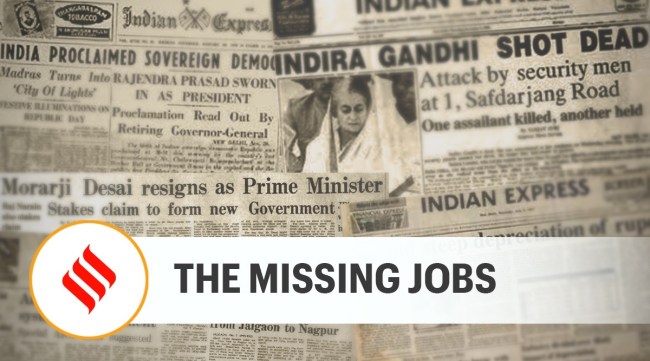Opinion Protests against Railway recruitment process point to sobering reality — inadequate job creation is taking a toll
🔴 The larger message is sobering — the inability to facilitate employment generation and to expedite the creation of a labour-intensive manufacturing sector to absorb the millions of low and semi-skilled workers is taking a toll.
 The pandemic has only exacerbated India’s job crisis.
The pandemic has only exacerbated India’s job crisis. Over the past few days, protests broke out against the Ministry of Railways’ recruitment process in the states of Uttar Pradesh and Bihar from where a sizeable portion of candidates appear for the common test for the non-technical popular categories posts. The protesters have flagged issues in the recruitment procedure, such as allowing candidates with higher qualifications to compete for jobs meant for those with lower qualifications. But at their core, the protests are about the lack of jobs, they illustrate the toll it is taking on the young. The railways’ recruitment drive is indicative of the glaring mismatch between the demand and supply of jobs — a staggering 1.25 crore candidates appeared for 35,281 vacancies. And this is not a one-off. Over the years, there have been numerous reports of the number of candidates applying for even entry-level government jobs far exceeding the vacancies available. The growing clamour for increasing reservation in public sector jobs by various caste groups, as well as for widening the ambit of reservation to encompass the private sector, also point to the same malaise of inadequate employment creation in the country. The pandemic has only exacerbated India’s job crisis.
The labour market data points to three worrying trends. First, the labour force participation rate has declined sharply. According to CMIE’s estimates, it has fallen to around 40 per cent, much lower than levels observed in comparable countries. This implies that even in a “young” population, many are dispirited by the lack of jobs, and are opting out of the labour force. Second, the unemployment rate has risen, meaning that among those looking for jobs, many are unable to find them. It is a matter of concern that the unemployment rate remains elevated among the youth and the more educated. A consequence of this falling labour force participation and rising unemployment rate is that the country’s employment rate has been declining steadily. As per CMIE, the employment rate at the all-India level has fallen from 43 per cent in December 2016 to 37 per cent in December 2021. In Uttar Pradesh, it has fallen from 38.5 per cent during September-December 2016 to 32.8 per cent during September-December 2021. Third, and equally concerning, is the shift away from regular salaried employment towards casual wage labour. This means that workers are increasingly being employed in low-paying, less productive jobs.
The lawlessness on display in the last few days is condemnable. Protests in some places took a violent turn, a train was set on fire in Bihar. The police response has been problematic — six policemen in Allahabad have been suspended for using excessive force against students. The larger message is sobering — the inability to facilitate employment generation and to expedite the creation of a labour-intensive manufacturing sector to absorb the millions of low and semi-skilled workers is taking a toll. It remains one of the biggest challenges before the government.
This editorial first appeared in the print edition on January 28, 2022 under the title ‘The missing jobs’.




